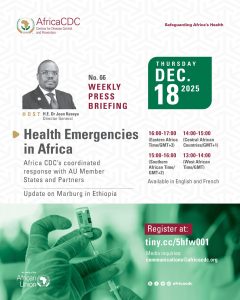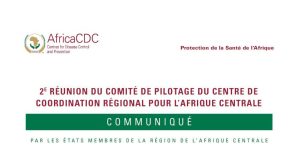A study of Africa’s current and planned vaccine manufacturing capacity offers insights into how to target investments and development efforts to promote long-term success.
Africa is largely reliant on other regions of the world for lifesaving vaccines. Currently, only one percent of the vaccines administered in Africa are produced locally; the remaining 99 percent are imported. Such an imbalance in production can contribute to unequal access to needed vaccines and enormous health disparities between regions.
The tide is turning, however; investment in African vaccine manufacturing has surged in recent years as Africa works to safeguard itself against future pandemics and disease outbreaks—and particularly to avoid the delays African nations faced in receiving COVID-19 vaccines. But, with so many new projects on the horizon there’s a risk that disparate and uncoordinated efforts will yield duplicative investments in some areas and under-investment in others—which could jeopardize long-term impact.
Increasing Africa’s vaccine manufacturing capacity will be a multi-year, complex undertaking that requires stakeholders across the public, private, and social sectors work together to create a robust enabling environment. Where do we begin?
Together, the Africa Centres for Disease Control and Prevention (Africa CDC), the Clinton Health Access Initiative (CHAI), and PATH examined the current and planned vaccine manufacturing capacity in Africa to generate insights into what’s needed to develop a robust and sustainable vaccine manufacturing ecosystem. Details are available in a new briefing paper and the information can help stakeholders and funders better coordinate and prioritize development efforts, interventions, and investments.
Akhona Tshangela, Partnerships for African Vaccine Manufacturing (PAVM) Coordinator for the Africa CDC; Frauke Uekermann, PhD, CHAI’s Director of Vaccines Markets; and Simone Blayer, PhD, PATH’s Global Head of Chemistry, Manufacturing, and Controls and Nonclinical Toxicology share project insights and how we can help move African vaccine manufacturing forward.
How much capacity does Africa have to manufacture vaccines locally?
Dr. Blayer: Africa has more than enough capacity to formulate fill, and finish (form/fill/finish) vaccines. Current capacity is around 2 billion doses—nearly double the average annual vaccine demand. And, more form/fill/finish capacity is planned; if it all comes to fruition, capacity to form/fill/finish vaccines would more than double the projected African vaccine demand in 2030.
At the same time, capacity to produce antigens locally, the first step in the vaccine manufacturing process, is very limited. Even when capacity expansion plans are taken into account, local antigen production will significantly lag behind the continent’s form/fill/finish capacity.
What are the biggest hurdles to building sustainable vaccine manufacturing capacity?
Dr. Uekermann: Commercial viability poses a huge challenge. The significant excess in form/fill/finish capacity means there likely won’t be an available market for all manufacturing projects under consideration. Also, local government support has been a driving force behind many manufacturers’ plans, which has led to strategies that are aligned to domestic political decisions rather than market requirements—which presents challenges for breaking into the regional and global markets that are necessary for success.
Limited access to technology transfer is another obstacle. Africa is highly reliant on technology transfers with non-African vaccine manufacturers to use the production capacity already installed. But, today, there are insufficient technology transfers in place given the uncertainty in market demand. There also aren’t enough technology transfer partners. Existing agreements are largely with one non-African vaccine manufacturer, which risks a strong dependency on a single organization.
Where is Africa’s vaccine manufacturing ecosystem strong?
Ms. Tshangela: African leaders’ commitment to building vaccine manufacturing capacity has fast-tracked a roadmap to make Africa self-reliant. For instance, in 2021, the African Union Heads of State and Government formed PAVM to strengthen the continent’s vaccine manufacturing ecosystem and set a goal of locally manufacturing 60 percent of Africa’s immunization needs by 2040. In the past two years, we have seen investments in regional manufacturing total well over 1.5 billion dollars—highlighting global commitment to support the continent’s efforts to diversify health product manufacturing and ensure global health security for all.
We are getting closer. While conducting site visits for this study, we saw state-of-the-art manufacturing facilities on the continent with adequate operational capacities. With the right resources—such as funding support, technology transfer, and demand certainty—these facilities could be ready for use should the next pandemic hit.
Where should donors and other stakeholders direct their efforts?
Ms. Tshangela: It is crucial to target investments and develop efforts strategically. Longer term, the most strategic investments are those that will focus on building capacity to manufacture antigens locally—this can help mitigate some of the reliance on technology transfer and build end-to-end vaccine manufacturing capabilities. But in the short and medium terms, it’s also important to fund technical support activities that can help manufacturers meet international quality standards like Good Manufacturing Practice and World Health Organization prequalification.
We encourage African vaccine manufacturers to strengthen business planning and focus on vaccines that have strong market potential to ensure economies of scale. Working with our member states on demand commitments for African-made vaccines is also a huge need—by doing so, we can not only help business planning but also accelerate pending technology transfers.
What comes next?
Dr. Blayer: Examining current and planned vaccine manufacturing capacity and capabilities is only one step in the process. We also need to understand the conditions needed to achieve the planned capacity (for example, types and sizes of future factories, workforce numbers, and types of expertise needed). PATH is currently working with partners to define these conditions, which can help manufacturers clarify business and operational needs.
Dr. Uekermann: Developing a set of high-impact market-shaping interventions and supporting in their execution can help address some of the strategic and commercial gaps, like developing demand commitments for African-made vaccines and facilitating the development of strategic technology transfers, among others. CHAI and key stakeholders are currently supporting this work.
Ms. Tshangela: The Africa CDC is working with African Union Member States to support the procurement of African-made vaccines and identify and prioritize activities that will help Africa reach its manufacturing goals. This includes working with local regulators and the manufacturing workforce to provide essential skills and knowledge. This work was made possible by the support of the American people through the United States Agency for International Development (USAID) and by funding from the Bill & Melinda Gates Foundation. The contents do not necessarily reflect the views of USAID or the United States Government, or the Bill & Melinda Gates Foundation.







